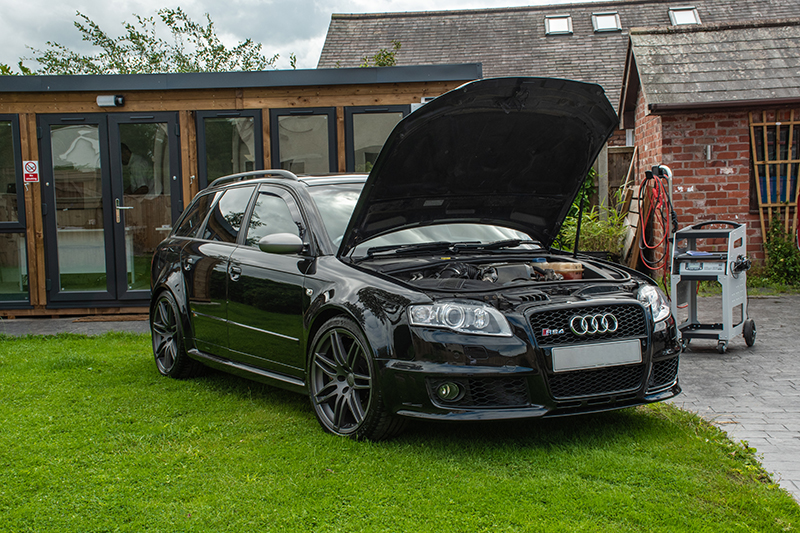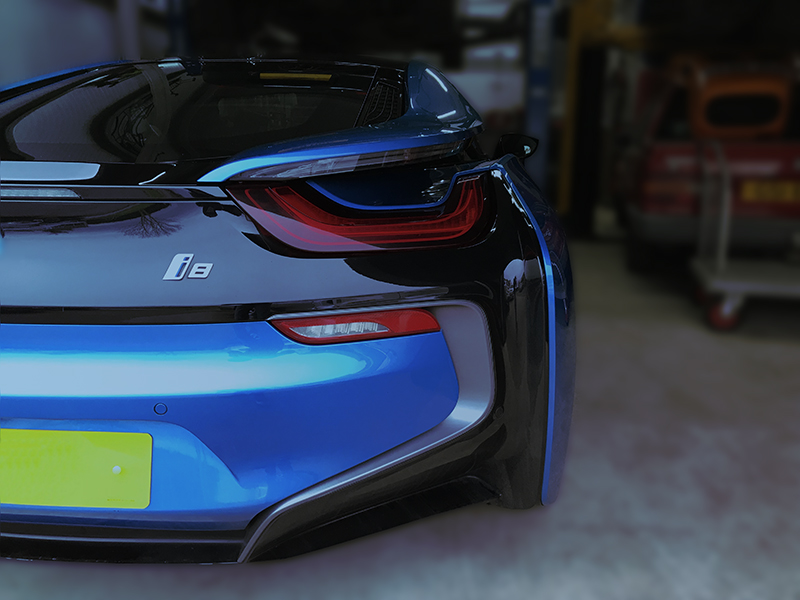
Maverick Diagnostics’ Managing Director Andy Brooke is a self-confessed petrol head. If he can learn to live with, and even love, EVs, you can too!
I clearly remember the day I started to hate EVs. I had gone with a friend to pick up her daughter from a private school in Chester, only to find the Range Rovers and Porsches driven by the au pairs and nannies had suddenly been replaced with (yes, you guessed it): Teslas. Here we go, I thought, saving the planet at a mere 100k a pop, that’s not going to work, it’s just one big exclusive club. How wrong I was!
Eight years later, I still collect old 80s and 90s turbo cars, we at Maverick sponsor and work on a drag racing team, I still do a bit of hill climb racing in my homebuilt, supercharged special and we sponsor a certain touring car driver (Mr Rowbo), so nothing would appear to have changed.
Look a bit closer and it has all changed. My perspective about motorsport and the internal combustion engine car and the future of the UK’s automotive industry has altered completely, and my daily driver is an entirely different matter altogether.
A few years ago, I was watching an episode of Jay Leno’s garage; Jay is a man after my own heart and undeniably one of the world’s biggest petrol heads. He made a very interesting comment: “internal combustion cars will become like the horse”. He went on to explain: “100 years ago horses were our main means of transportation, in our era horses are a hobby or for sport, this will be the same for the internal combustion cars of today. In the next decade, everyday cars will be EVs – either hydrogen-based fuel cell or battery technology. Internal combustion will be for a hobby or sport!”
I now share his sentiment; it’s been a struggle for me to love EVs but I can now see what they’re all about and why they are the future. It should be clear to everyone, but just in case you missed it, the EV revolution has already started, and it didn’t really start with the Tesla model S in 2014. Yes, Elon Musk made a very big and important point with Tesla – that EVs can be fast and in some ways fun and different. Tesla moved some automotive technology on enormously, some bits were pieced together from other industries, but they were out of reach of most of us with a 100k price tag.
Unfortunately for the automotive aftermarket, Tesla is a technology company making a car, not a car manufacturer making an EV. This meant Tesla is still essentially a closed network, opening gradually after several lawsuits in the EU to allow access to their data. Tesla claimed that they were a low volume manufacturer which didn’t need to adhere to any emissions or block exemption regulations. This is an ongoing fight and Tesla has now made diagnostics and training available to the aftermarket – at a very high cost, obviously.

Cheaper option
For most of us in the automotive aftermarket the EV revolution really started with the first cheap, affordable, full EV car, which was quietly launched in 2011: the Nissan Leaf. It is as stylish as a washing machine and as uninspiring as a ready meal, but unfortunately for us petrol lovers it is a good, reliable, very cheap to run, practical vehicle for local runs.
There are lots of Leafs registered in the UK; I bought one a couple of years ago as a training tool and the whole team ending up using it. One of my tech team who is known to be “not the first person to open his wallet at the bar” refused to give it up! The commute became a cost saving exercise as he lives on a hill, and he enjoyed playing “how to get to work and generate extra miles for the way home”, further saving his electricity bill at home and his fuel bills.
The arguments against full battery EVs are substantial and, to be honest, for long distance drivers the issues currently outweigh the benefits – unless you enter “smug mode” and buy a Tesla with the only decent charging infrastructure countrywide. Number one on the list is range anxiety. Fundamental issues remain, such as the lack of high KW charging stations in the right spots in the UK. I have first-hand experience of this, spending frustrating hours at so-called EV charging points when I am hooked up to an 11kw charger when I need 150kw; the difference being 15 hours of your life to charge a vehicle versus 40 minutes. Then, being completely overcharged for the privilege of a high KW charger after fiddling with endless phone apps.
Here’s the thing: I use EVs and hybrids everyday now, and I think I’ve worked out how to do it without causing myself anxiety or stress and I’ve learned to love them now.
To find out Andy’s secret to EV happiness read the second instalment in next month’s issue of PMM.









